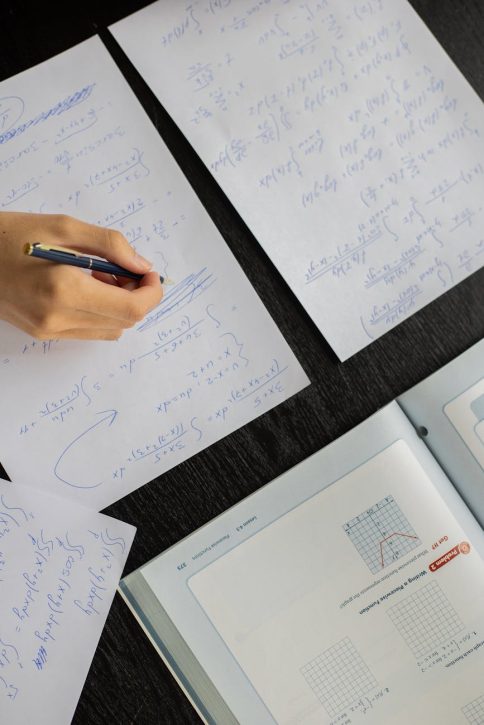Understanding Graph Neural Networks
Introduction to GNNs
Graph Neural Networks (GNNs) are a powerful advancement in the field of deep learning, specifically designed to analyze graph-structured data. Developed over the past decade, GNNs have gained significant capabilities and expressive power, making them increasingly relevant in numerous applications. GNNs utilize a message-passing framework that transforms the attributes of a graph, such as nodes and edges, while preserving their intrinsic relationships. This ability to maintain graph symmetries is essential for effective graph analysis tasks (Distill).
Unlike traditional machine learning algorithms, GNNs excel in scenarios where relationship data is crucial. They can learn from both the characteristics of individual points (nodes) and the connections between them, leading to better pattern detection. This is particularly valuable in situations where conventional feature sets are inadequate or non-existent (Dataiku).
| Key Features of GNNs | Description |
|---|---|
| Message-Passing Framework | Preserves relationships between entities |
| Graph Symmetries | Maintains structural integrity during analysis |
| Enhanced Predictive Power | Combines graphical representation with deep learning |
To dive deeper into GNNs, you might find our graph neural networks tutorial helpful.
Applications of GNNs
GNNs have a wide range of real-world applications, showcasing their versatile capabilities. Some notable areas include:
- Antibacterial Discovery: GNNs assist in identifying new antibacterial compounds by analyzing chemical properties and relationships.
- Physics Simulations: They are used in simulating physical phenomena by representing complex relationships in data.
- Fake News Detection: GNNs can help analyze social media and news articles to determine reliability and authenticity.
- Traffic Prediction: GNNs contribute to predicting traffic patterns by analyzing historical data of road networks.
- Recommendation Systems: They enhance recommendation engines by effectively understanding user preferences and relationships between items (Distill).
The capacity of GNNs to provide deeper insights into relationships within data enables you to make more informed decisions in various fields. If you’d like to explore more about how graph theory applies in real life, don’t hesitate to check out our piece on applications of graph theory in real life.
Graph Neural Networks represent an exciting frontier in the intersection of deep learning and graph theory, allowing you to leverage data in innovative ways and tackle complex challenges effectively.
Fundamentals of Biconnectivity
Biconnectivity is an essential concept in graph theory, particularly when discussing the robustness and resilience of networks. Understanding biconnectivity allows you to better grasp the underlying structure of graphs and enhance your knowledge of deep learning on graphs.
Biconnectivity Explained
In graph theory, a graph is said to be biconnected if it contains no single point of failure. More technically, a biconnected graph is one where there are at least two distinct paths between any two vertices. This means that removing any single vertex will not disconnect the graph.
To illustrate, consider the following:
- A graph with multiple connections between nodes is biconnected.
- A tree, however, is not biconnected because removing its root will separate the tree into disjoint parts.
Here’s a simple table to visualize biconnectivity:
| Graph Type | Biconnected? | Reason |
|---|---|---|
| Complete Graph | Yes | Every node is connected to every other node. |
| Tree | No | Removing the root splits the graph into two. |
| Cycle | Yes | There’s more than one path between any two nodes. |
Biconnectivity is vital for ensuring network stability, especially in real-world applications where you want to maintain connectivity even when certain nodes fail.
Importance in Graph Theory
Biconnectivity is significant in various areas such as network design, reliability analysis, and the development of robust systems. It helps identify critical connections and vulnerabilities within networks.
-
Enhanced Connectivity: In communication networks, biconnectivity ensures that the system remains operational even if a link or node fails. This is crucial for maintaining consistent service.
-
Robustness in Data Processing: In contexts like deep learning on graphs, models benefit from the relationships preserved in biconnected graphs. They can detect patterns more effectively due to the redundancy of paths between nodes.
-
Applications in Real Life: Understanding biconnectivity can help in various scenarios, such as traffic routing, social network analysis, and ensuring data integrity in databases. For more information on how graph theory applies in real life, you can explore our section on applications of graph theory in real life.
The concept of biconnectivity serves as a foundation for your understanding of more advanced topics in graph theory and its practical implementations. For those interested in further exploring this area, it’s beneficial to review graph neural networks algorithms and graph theory code examples to see how these concepts can be applied in real cases.
Implementation of Biconnectivity Algorithm
Understanding the implementation of algorithms in graph theory can enhance your knowledge and skills in handling complex data structures. The Biconnectivity algorithm is essential for analyzing the structure of graphs, specifically for identifying parts of a graph that remain connected, even if some edges are removed.
Algorithm Overview
The Biconnectivity algorithm focuses on finding biconnected components (BCCs) in a graph. A biconnected component is a maximal subgraph that remains connected even after the removal of any one vertex. To implement this algorithm, you will typically follow these steps:
- Initialize Depth-First Search (DFS): Start a DFS traversal of the graph to explore all possible vertices.
- Track Discoveries and Lowest Reachable Vertices: Maintain two arrays – one for discovery times of vertices and the other for the lowest reachable vertex from each vertex.
- Identify Biconnected Components: Use a stack to track edges; when you complete a DFS from a vertex, record the edges that form a BCC.
This algorithm is not only beneficial for identifying articulation points but also forms the foundation for more advanced algorithms in deep learning on graphs.
Code Examples and Walkthrough
Here’s a simple code implementation to demonstrate the Biconnectivity algorithm using DFS in Python:
class Graph:
def __init__(self, vertices):
self.V = vertices
self.adj = [[] for _ in range(vertices)]
self.time = 0
def add_edge(self, u, v):
self.adj[u].append(v)
self.adj[v].append(u)
def biconnected_util(self, u, visited, parent, disc, low, bcc_stack):
children = 0
visited[u] = True
disc[u] = low[u] = self.time
self.time += 1
for v in self.adj[u]:
if not visited[v]: # If v is not visited
parent[v] = u
children += 1
bcc_stack.append((u, v))
self.biconnected_util(v, visited, parent, disc, low, bcc_stack)
low[u] = min(low[u], low[v])
if (parent[u] is None and children > 1) or (parent[u] is not None and low[v] >= disc[u]):
print("Biconnected Component:", end=' ')
while bcc_stack[-1] != (u, v):
print(bcc_stack.pop(), end=' ')
print(bcc_stack.pop()) # Pop the edge which is the cut edge
elif v != parent[u]: # Update low value of u for parent function calls
low[u] = min(low[u], disc[v])
bcc_stack.append((u, v))
def biconnected_components(self):
visited = [False] * self.V
disc = [float("Inf")] * self.V
low = [float("Inf")] * self.V
parent = [None] * self.V
bcc_stack = []
for i in range(self.V):
if not visited[i]:
self.biconnected_util(i, visited, parent, disc, low, bcc_stack)
# Example Usage:
graph = Graph(5)
graph.add_edge(0, 1)
graph.add_edge(1, 2)
graph.add_edge(2, 0)
graph.add_edge(1, 3)
graph.add_edge(3, 4)
graph.biconnected_components()
In this code, we create a Graph class that allows for the addition of edges and the calculation of biconnected components through a DFS approach. The biconnected_components method initializes the DFS and prints out components as they are found.
For more insights into code implementations related to graph theory, feel free to check our section on graph theory code examples or dive deeper into advanced techniques with graph neural network implementation.
Practical Applications of Implementing GNNs
Deep learning on graphs has opened up exciting possibilities across various domains. From healthcare to social networks, Graph Neural Networks (GNNs) are showing their potential by improving predictive modeling and decision-making processes.
GNNs in Real-World Scenarios
You might be surprised to see how GNNs are being applied in real-world situations. Some notable examples include:
- Antibacterial Discovery: GNNs help in identifying potential antibacterial compounds by modeling the interactions between drug molecules and bacterial proteins.
- Physics Simulations: They are used to predict physical phenomena in complex environments, benefiting research in materials science and engineering.
- Fake News Detection: GNNs analyze the relationships between users and content to identify and flag misleading information in social media platforms.
- Traffic Prediction: By modeling road networks as graphs, GNNs can accurately predict traffic flow, aiding in urban planning and route optimization.
- Recommendation Systems: GNNs leverage user-item relationships to enhance personalized recommendations in online shopping platforms.
These applications showcase the versatility of GNNs and their ability to manage complex relationships effectively, often surpassing traditional machine learning techniques in these scenarios. For a deep dive into the workings of GNNs, check our graph neural networks tutorial.
Impact of GNNs on Various Fields
The impact of GNNs extends across multiple fields, enhancing various applications:
| Field | Application |
|---|---|
| Healthcare | Drug discovery, patient outcome predictions. |
| Social Networks | User behavior analysis, influence prediction. |
| Transportation | Route optimization, traffic management. |
| Finance | Fraud detection, credit scoring. |
| Natural Language Processing | Relation extraction, document classification. |
Graph-based models have a unique advantage due to their ability to represent information not just as isolated points but also in relation to other nodes, making them particularly useful for complex data scenarios. This capability is invaluable when traditional feature inputs are lacking or insufficient, as highlighted by Dataiku.
In summary, the advancements in Graph Neural Networks and their real-world applications are reshaping various industries, leading to more intelligent solutions and better decision-making frameworks. If you are interested in learning about practical implementations, consider exploring our resources on graph neural network implementation and graph theory practical applications.





